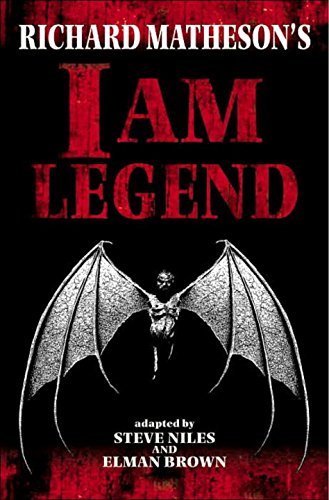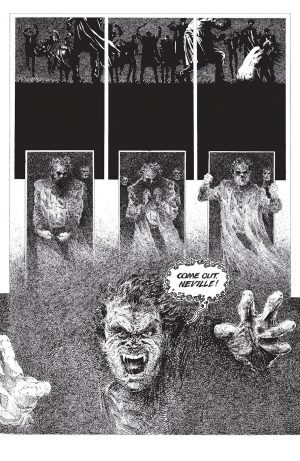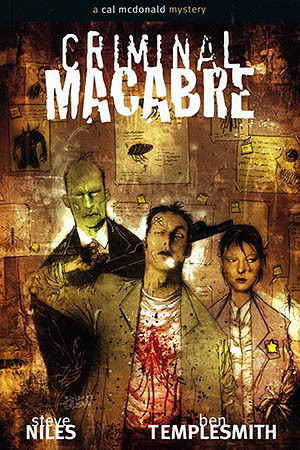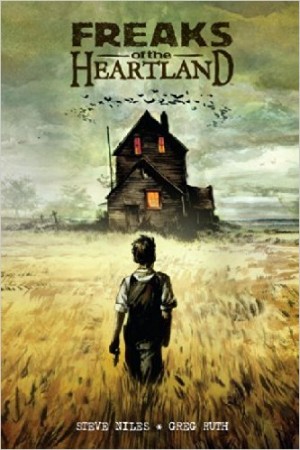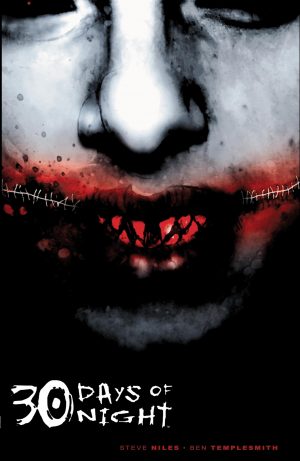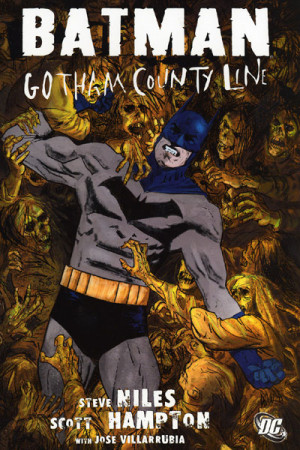Review by Ian Keogh
I Am Legend begins with a description of Robert Neville’s day to day life. He lives alone, but under threat, never leaves home during darkness, and frequently has to make repairs after attacks to his home. He’s burned down the buildings either side of his own to prevent his attackers jumping onto his roof. It’s not until it’s revealed that Neville grows excessive quantities of garlic for protection that it falls into place what’s threatening him. He also makes his own wooden stakes.
Richard Matheson’s original novel is very reflective. The threat of vampires is constant, but Matheson’s interest is what it’s like to be the last human on Earth. There are pre-apocalyptic references, but the how and why isn’t necessary to the experience of Neville living under siege through the hours of darkness. Steve Niles brings out the isolation, paranoia and incipient alcoholism very well, using blocks of narrative text, and we’re shown the points when Neville hits rock bottom at the never ending repetition of his lonely life.
Although issued as a graphic novel in 2005, I Am Legend was originally serialised in 1991, among Niles’ earliest published work, and little has been heard of artist Elman Brown since, which is a shame. There are rough edges, but he puts a lot of effort into detailed portraits of Neville and the scrubby landscapes, strong at conveying how Neville feels, and you can have far poorer artistic influences than Bernie Wrightson.
Matheson wrote his story in 1954, long before vampires had become such all-purpose horror currency, which explains the turning point of the aversion vampires have to sunlight being major news to Neville. Were vampires to take over the world today, most people would have an idea of what affected their literary equivalents. However, it’s later the case that Matheson applies much thought to the biological and chemical processes of the vampire, and moments of terror remain powerful. Neville’s continuing health is dependent on the certainty of his watch and the fuel gauge on his car working as he must be home by darkness, and the longest action sequence is when his technology fails. Matheson has several other shocking moments to drop, all well emphasised by Niles.
Some may feel Niles sticks too religiously to the text, as there are pages where just the single illustration breaks it up, yet that’s surely inevitable in a story focussing on one person almost all the way through. Neville is seen going through the entire emotional spectrum, small moments of elation far fewer than resignation or despair, and eventually a need for some form of companionship manifests. There’s little sentimentality in a daily struggle for survival, but there’s a reason Matheson’s novel is constantly in print, and has seen three filmed versions, and Niles and Brown bring that out.
IDW subsequently published three more adaptations of Matheson’s work, and in 2016 combined all four as Richard Matheson: Master of Terror – Graphic Novel Collection.
